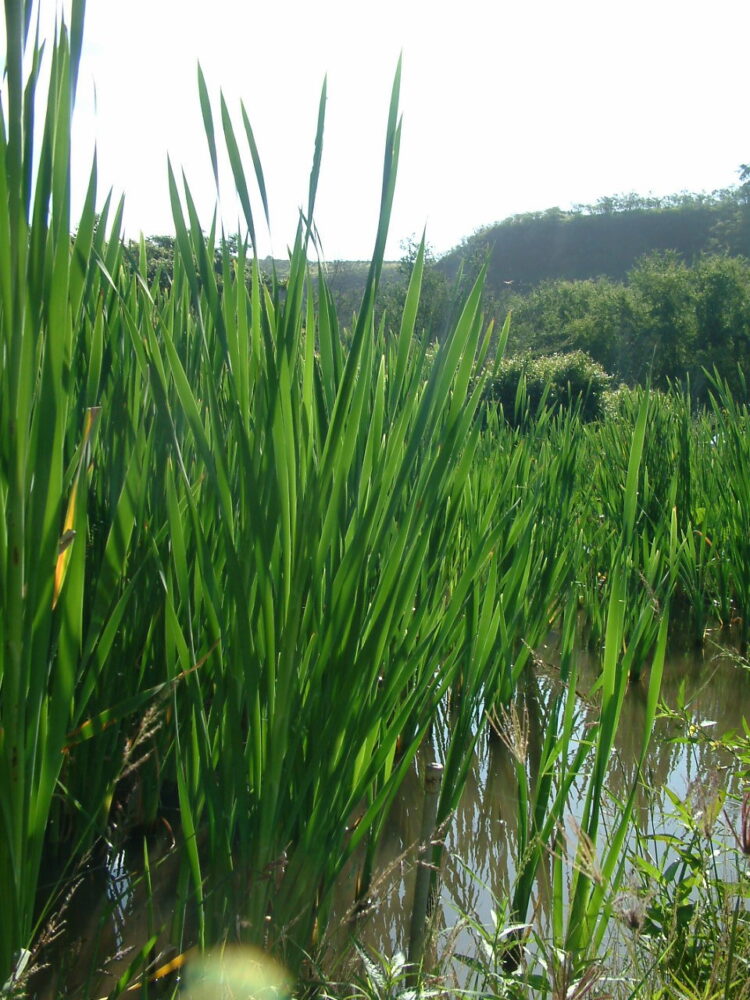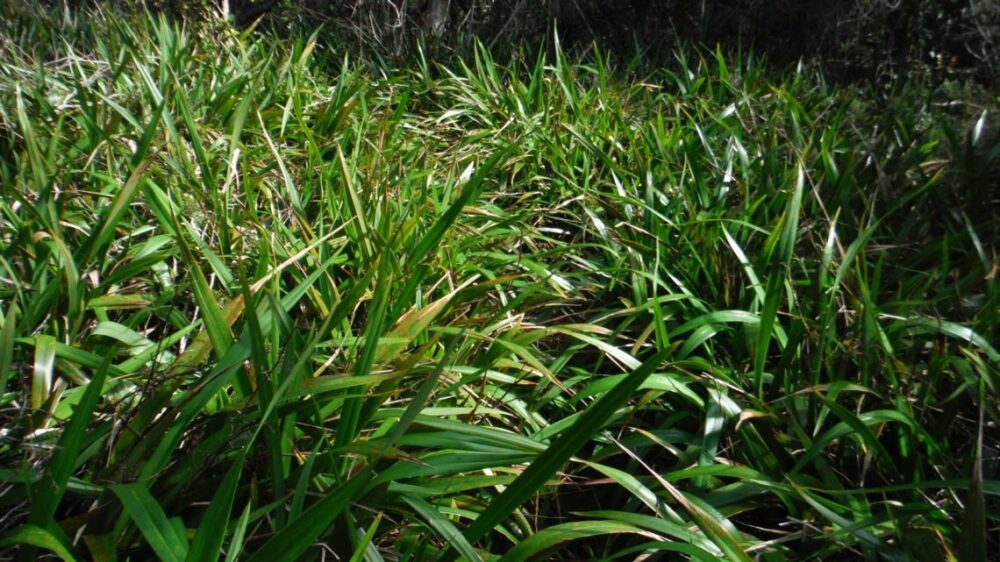
Cattail
Cattail
Species: Typha latifolia
Family: Typhaceae
Although this is not a KISC target species, Sightings of this pest should be reported immediately.

Description
- A wetland rush with long, thick leaves
- Flower is brown and shaped like a cigar, seeds spread by wind
- Long stem grows underground into a creeping mat
- Native to Eurasia, Africa, and North America, introduction history in Hawaii unknown. First discovered on Oahu in 1979
Impacts
- One flower head can produce 250,000 seeds, which spread by wind and are viable for 100 years
- Underground runners can produce new plants
- Takes over wetlands, crowding out native plants and destroying native waterbird habitat (leaving endangered Hawaiian stilt and koloa duck homeless)
- Threatens the taro industry as it invades loi (taro patches). Difficult and costly to reclaim infested areas for taro production





On Kauai
- Populations in Kekaha, Makaweli and Waimea Valleys, Lawai, Koloa, Poipu, Mahaulepu, Nawiliwili, Hanamaulu, Kealia, Kilauea, and Hanalei.
- KISC is working to control as many populations as possible, but asks that landowners help by controlling this pest wherever possible. Contact KISC for control advice at 808-821-1490 or kisc@hawaii.edu.
- On the Pono Endorsement Black List. Pono Endorsed Nurseries and Landscapers have agreed to continue to not sale cattail.

Look-a-likes:

Uki Uki
Dianella Sandwincencis
Uki Uki could similarly look like Cattail. Although Uki Uki’s more suitable habitat is in mesic forests, and most likely seen as a ground cover or understory growth. This plant is also distinguishable by its bright blue round fruits.
